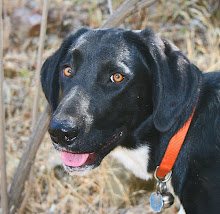
I set four camera traps in Sierra county a month before the camera trapping workshop, and was mighty pleased to find that mountain beavers -- hereinafter show'tls or aplodons -- occur in the drainages feeding the Yuba river.
Yes, from here on out I am calling them "aplodons" or "showtls". They deserve a catchy vernacular tag or a name (like "simple teeth") befitting their unique evolutionary position.
Let's forget the term "mountain beaver". Yes, like beavers they are excellent swimmers and waterway engineers, but there the resemblance ends. The name boomer doesn't cut it either. The only report of such a sound is now over 130 years old.
Then there's the name "sh'auch" used by the Indians of Puget Sound. It meant "creature that creeps in the undergrowth", and you can guess why that didn't take. The other moniker -- "sewellel" -- is said to have been the Indian term applied to robes made of their furs.
Enough. Back to the workshop. . .
When it commenced on July 21, the cams had been in the field for a month. Knowing that camera trapping is often slow business, I wanted to fire up the class at the outset by showing them the seldom seen showtl.
The gamble paid off. After I had rambled at length the first morning about camera trap sets and camera attachment methods, we climbed into the nearby thicket, found the cam, and clicked through the pictures.
A beady-eyed rodent finally appeared in the LCD, and being topless, she disclosed her sex within the first few pictures (notice that I don't confuse sex with gender). We didn't realize this until she was displayed on the computer screen.
The fact that she was bare-breasted has special significance. Female aplodons have very hairy nipples when cycling, pregnant, or lactating. We're talking about "dense patches of black hairs". Though a sign of showtl womanhood and of certain adaptiveness, it is not an enviable trait. It's likely that this bare-nippled girl was born this spring.

Aplodon colonies in this part of the sierra are in sprawling alder thickets bordering the Yuba river and its tributaries. We found numerous nipped twigs of alder, but the pruned stubs were dry and gray. I was almost convinced that alder is a springtime food until we found a burrow with leafy wilting branches.

Lewis and Clark were the first to report on aplodon's climbing ability, but University of California mammalogists Joseph Grinnell and Tracy Storer had their doubts. Lloyd Ingles proved it with photography.
Ingles built an enclosure at Huntington Lake in the southern sierra, and stocked it with two females from a nearby colony. They climbed 20 ft up into white firs and lodgepole pines, and in 4 weeks pruned off most of the branches. Aplodons are respectable if not acrobatic climbers of trees and shrubs, but they have to descend butt-first.

I thought that aplodons would be easy pickings for the workshop participants, but I was wrong. No one else got their photos.
When I checked the date and time stamps on my own pictures I realized why. The animal had visited the burrow only on three occasions, and the first visit wasn't until three weeks had passed. Aplodons have extensive burrow systems with multiple openings.
During the course I tried to get more photos by planting my small camera traps in underground tunnels with caved in ceilings. Every sign indicated they were active tunnels, but no aplodon showed it face.

References
Camp, C.L. 1918. Excavations of the burrows of the rodent Aplodontia, with observations on the habits of the animal. Universitu of California Publications in Zoology 17(18):517-536
Godin, A. J. 1964. A review of the literature on the monjtain beaver. Special Scientific Report -- Wildlife No. 78. U.S. Department of the Interior, Fish & Wildlife Service, Bureau of Sport Fisheries and Wildlife, Washington D.C.
Ingles, L.G. 1960. Tree climbing by mountain beavers. Journal of Mammalogy, 42(3):120-121
Scheffer, T.H. 1929. Mountain beavers in the Pacific Northwest: their habits, economic status, and control. US Department of Agriculture, Farmers' Bulletion No. 1598:1-18



























